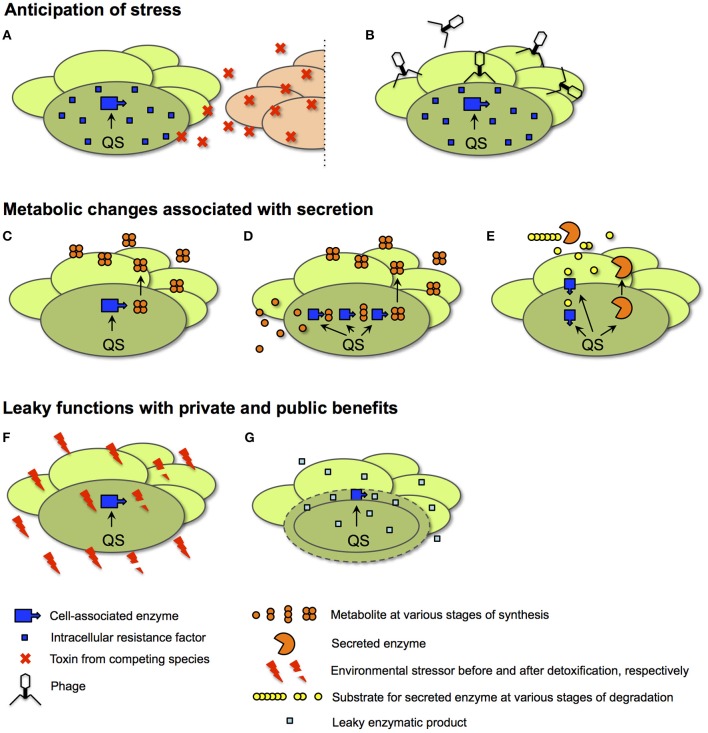Figure 6.
Scenarios for the QS control of private goods. In all cases, details of intracellular processes are shown for only one representative cell (darker shade of green) of a bacterial population at high cell density. (A,B) Anticipation of stress. In the examples shown, an intracellular resistance factor produced by a QS-controlled enzyme anticipates the need for protection from a toxin secreted by a competing species (red ovals in A) or from infection by phage (B). (C–E) Metabolic changes associated with secretion. In an example for a direct link to secretion (C), QS activates an intracellular enzyme responsible for the synthesis of a secreted metabolite. In a more indirect contribution to secretion, QS adjusts central metabolism (D). Here, intracellular enzymes provide precursors for the production of the secreted metabolite. In a third metabolic function (E), QS co-regulates enzymes involved in the uptake and intracellular processing of a degradation product generated by a secreted enzyme. The secreted metabolite and the secreted enzyme are examples of public goods. (F,G) Leaky functions with public and private benefits. In an example of homeostatic control of the shared environment (F), an environmental stressor such as reactive oxygen species or acid is detoxified by an intracellular enzyme. In an example of periplasmic leakage (G), the products of a periplasmic enzyme leak into the extracellular space; only a fraction is retained by the producing cell.

